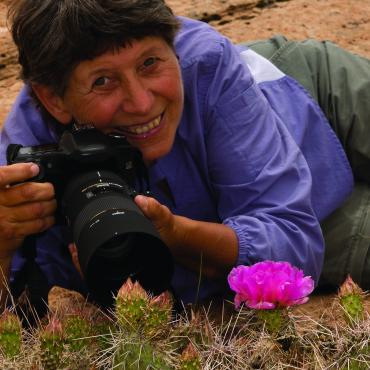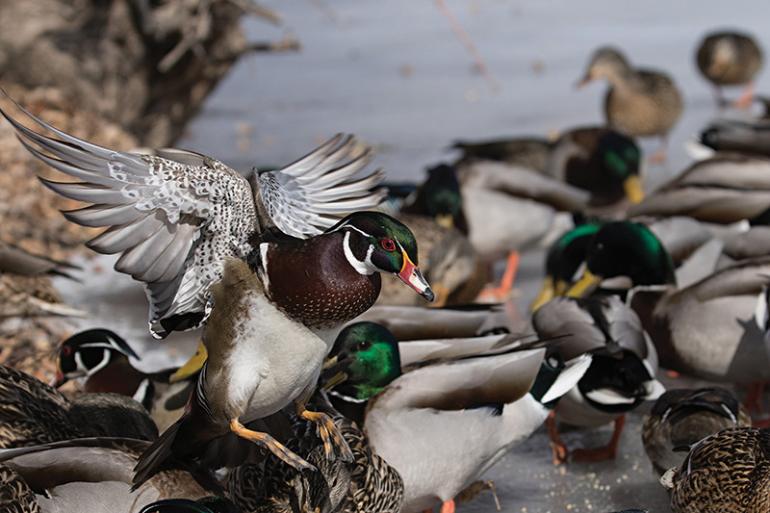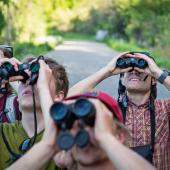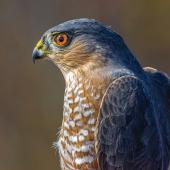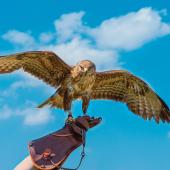Duck & Cover
Sacajawea Park’s winter waterfowl.
With orange landing gear stretched forward and webbed feet spread apart, dozens of Canada geese, mallards, and wood ducks made their descent. Wings moved into a silent glide position as they drifted downward from the sky. Their wings rapidly unfolded in a back-and-forth motion. I struggled to comprehend their ability to maintain balance and execute a perfect landing. I held my breath, thinking there would be a mighty impact, then a tumble, a collision with feathers flying and angry beaks pecking at each other—but not so. Their deft maneuvers were exacting and right-on. After all, this was their daily routine come this time of year.
Watching their sliding halt on ice, I wondered if the frozen water hurt their delicate feet. And once on snow and ice, how did their feet stay warm? I later learned of their special cooling adaptation between heat and cold. A mixture of warm arterial blood flows to the cooler venous blood and reduces the difference in temperature, acting like a natural thermostat. These veins are within a “webbed embrace” on the upper part of the fowls’ legs, a sort of counter-current temperature system. Warm feet are actually temperature-controlled, as the blood recirculates from body, to feet, and back to the body, keeping heat loss to a minimum.
Flying onto open snow or ice couldn’t compare to flying into dozens of grounded, flocked fowl without incident. And after precise landing, the ducks’ cheering squad applauded the skilled maneuvers with fluttering wings and loud quacking. They recovered from their peculiar sliding position and then waddled over to the task at hand—grabbing and pecking at the food scraps tossed in by the Livingston locals. Once stuffed, they shuffled their webbed feet to their favorite watering hole.
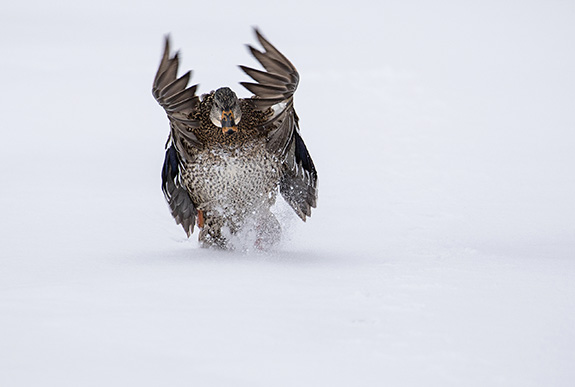
During the winter, when the water freezes in Sacajawea Park pond, the Livingston locals care for their favorite water birds. No matter how cold and frosty it may be, bundled-up spectators assemble to watch the antics and feed the fowl. Someone chips into the four-inch-thick Livingston Lagoon and a small pond opens up. The fowl flock to the open water in ecstasy. Dipping with butts up, foraging below the depths for natural foods, they bob in and out, and then do their ritual bathing. Frenzied splashing encompasses the patterned waterfowl. Feathers ruffle, tails wiggle, and the vociferous quacks punctuate the turmoil.
With my camera in one hand and a handful of cracked corn in the other, I look for a shot, wanting a backdrop of sky or bushes, but not area homes. The ice holds my weight. I toss, and the mad scramble on ice and from above begins. It’s challenging to photograph them in flight, but with practice, my aim has gotten as precise as their landings.


